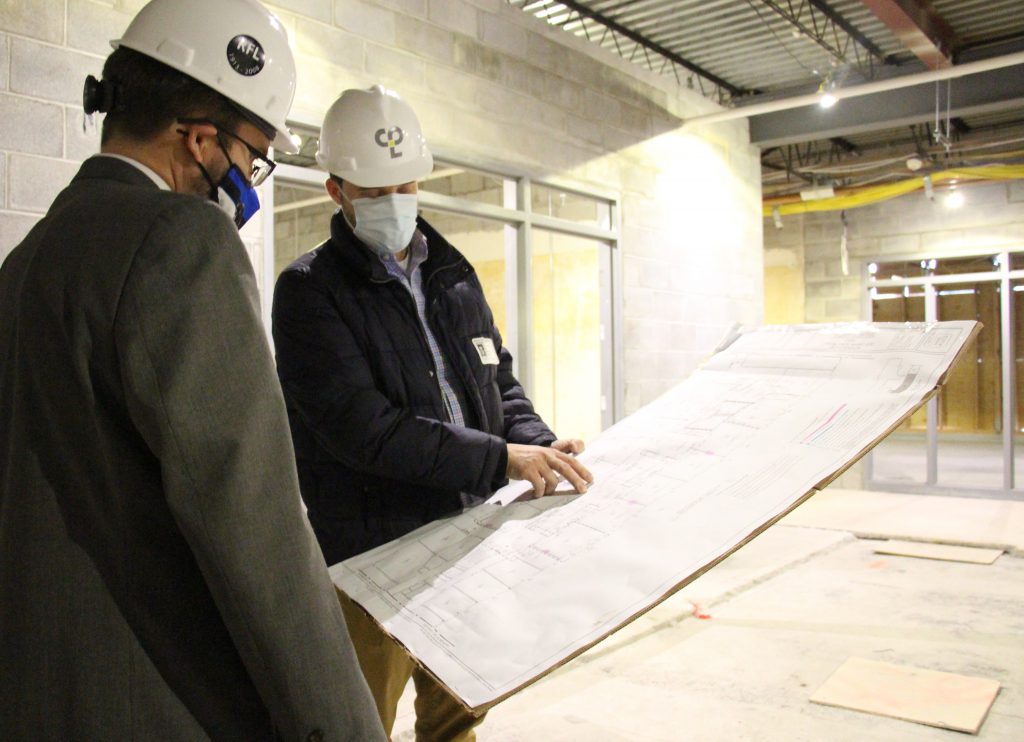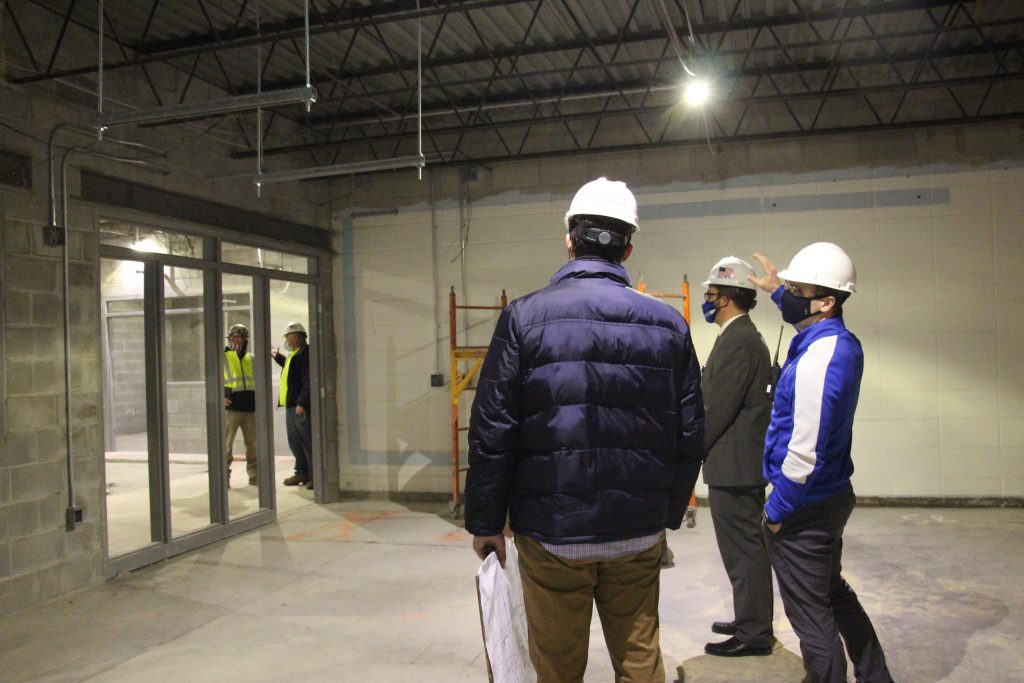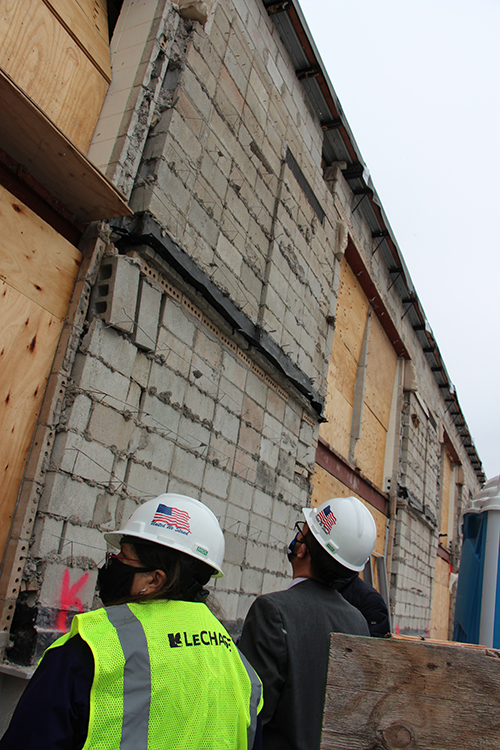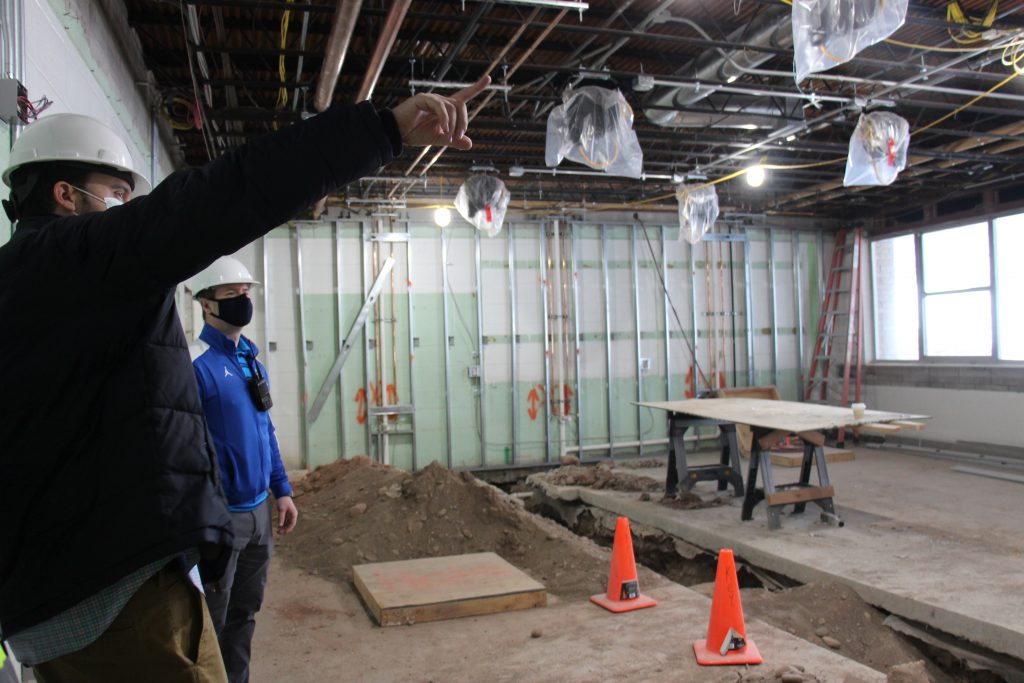Construction at Monticello High School is making great strides, with the 100/200 wing starting to take shape into the collaborative and flexible spaces planned. On Jan. 21, Dr. Matthew Evans, superintendent of Monticello Schools, Assistant Superintendent for Business Lisa Failla and MHS Principal Stephen Wilder toured the area that is considered Task 2 of the Classroom 2020 capital improvement project.

The areas include the English classrooms, science classrooms and labs, home and careers space, the IT department, shop and dance studio.
Floor-to-ceiling windows allow a flood of natural light into the classrooms. That light spills into the collaborative areas beyond the classrooms through large interior windows. There are also skylights in many areas.

The collaborative spaces are for students as well as teachers.
“These areas dramatically increase the amount of spaces for teachers to work together,” said Wilder.
Chris Ladanyi of Clark Patterson Lee architectural firm led the tour. He pointed out the new features, explained the structural and design changes to the building and brought the tour outside to some interesting masonry work that was found.

The outside masonry will now need to be replaced. When the façade of this side of the high school building was removed, what was revealed concerned the architects and builders. The block used to create the structure was stacked, one on top of the other, a process that is not best practice. There were also spaces between blocks that were simply empty. All of that block will now be replaced correctly.
Inside, there were some surprises too. In the physics room, a waste line for acids was found to be made of glass and broken in places. A large trench had to be dug in order to remove this waste line and replace it.

All in all, though, Task 2 of the project is on schedule to be completed before the first day of the 2021-2022 school year, according to Ladanyi.
“Nothing has happened so far to delay us,” he said.
“I am very impressed by the work that has been done so far,” said Dr. Evans at the end of the tour. “This space will be so valuable for our students and staff, to work together in a bright, and more importantly, safe environment. I am grateful to the public for allowing us to do this work that will make our high school a better place to learn.”
By the time Task 2 is complete in September 2021, 58 percent of the high school’s classroom space will have seen renovations, and the bus garage will be replaced with a new transportation center. The project will maximize the amount of instructional space and replace aged boilers, lighting and control systems with energy-efficient models – cost-savings strategies that increase state building aid eligibility, while decreasing energy costs.
Residents authorized the Classroom 2020 capital improvement project in November of 2018 to address some of the necessary structural repairs at all five school buildings. Capital improvement projects enable school districts to utilize capital bonds and state aid to finance facilities work outside the scope of general maintenance. These projects are subject to a complex set of state laws and regulations. Once a proposed capital improvement project is approved by voters, the funds can only be used for the capital work outlined in the proposal and cannot be used for any other purpose. Because the district was able to replace an expiring bond with the Classroom 2020 bond, these current projects are being completed with no impact to the tax levy.
Task 3 of the Classroom 2020 project will be the construction of tennis courts at the high school, partially financed by a capital bond approved by voters in the 2014-15 school year. The courts will be located in the triangle between the high school’s gymnasium entrance and Breakey Avenue. Task 3A will address the remaining elementary school repairs and Task 4 will address the remaining high school and middle school repairs. Task 1, the roofing repair at the elementary and middle schools, is complete.
